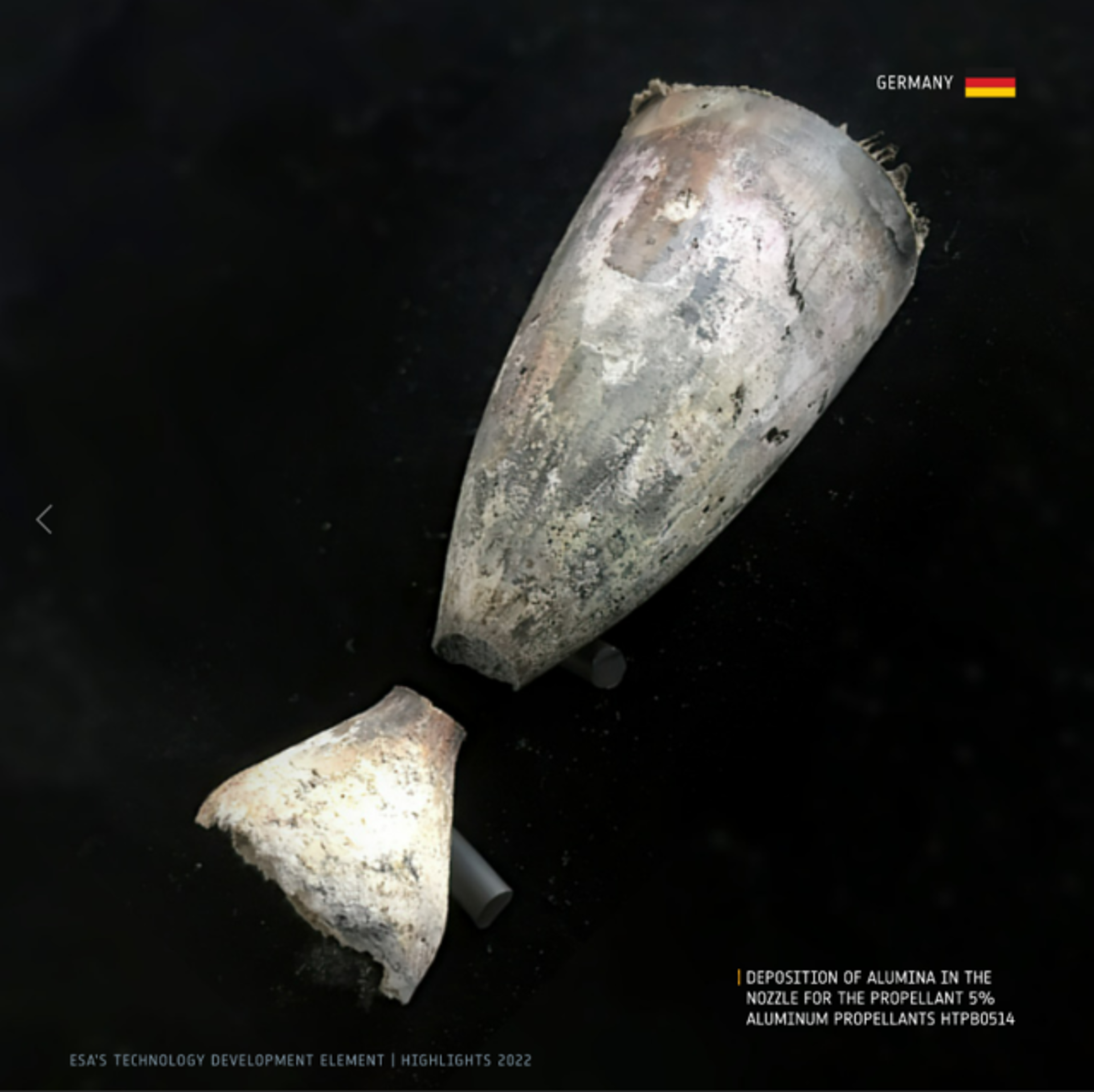Understanding how particles emitted during launch affect the environment
The ESA-EMAP activity is dedicated to the experimental modelling of alumina particulates in solid boosters. This requirement is rooted in the uncertainty regarding the impact of the alumina particles emitted by the solid rocket motors (SRMs) of European launch systems on the ozone depletion in the stratosphere.
This uncertainty needs to be addressed, in particular when facing the significantly increased number of rocket launchers predicted in the new space era.
ESA-EMAP has focused on an experimental investigation into how the particles form, as well as better understanding how they flow and move (and subsequently what impact they can have on the stratosphere). Conducted by DLR, Germany, with the TDE, the model will help improve knowledge about the alumina particles (size distribution, crystalline nature, etc) present in European solid rocket motors to support more accurate environmental assessments of Europe’s launches.

The tests were executed with a solid rocket motor (SRM) mimicking a launch system and operating under flight-realistic conditions by placing a rocket motor into a wind tunnel. The particle formation was assessed from the combustion chamber throughout the nozzle to its final state, as it would be expected in the atmosphere.
The activity developed and recorded a vast database on solid rocket exhaust plumes. The database now includes information on how the particles moved, their path along three different planes, particle size, velocity, temperature distribution, and the gas composition of the plume. That database now provides a foundation for further analytical explorations and the opportunity to validate models associated with the physics of solid rocket exhaust plumes.
T418-408MP closed in 2021.















 Germany
Germany
 Austria
Austria
 Belgium
Belgium
 Denmark
Denmark
 Spain
Spain
 Estonia
Estonia
 Finland
Finland
 France
France
 Greece
Greece
 Hungary
Hungary
 Ireland
Ireland
 Italy
Italy
 Luxembourg
Luxembourg
 Norway
Norway
 The Netherlands
The Netherlands
 Poland
Poland
 Portugal
Portugal
 Czechia
Czechia
 Romania
Romania
 United Kingdom
United Kingdom
 Slovenia
Slovenia
 Sweden
Sweden
 Switzerland
Switzerland


























